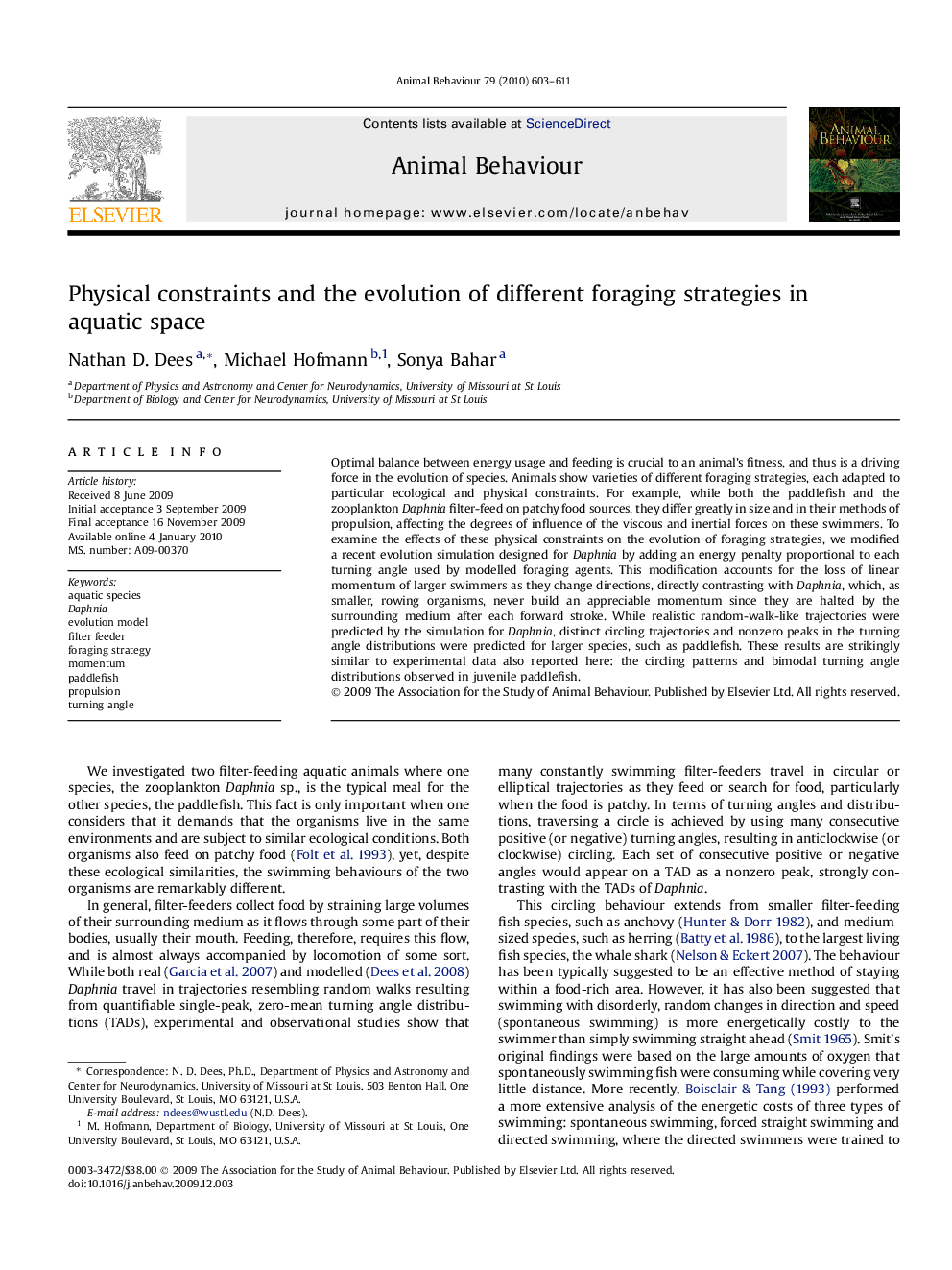| Article ID | Journal | Published Year | Pages | File Type |
|---|---|---|---|---|
| 2417389 | Animal Behaviour | 2010 | 9 Pages |
Optimal balance between energy usage and feeding is crucial to an animal's fitness, and thus is a driving force in the evolution of species. Animals show varieties of different foraging strategies, each adapted to particular ecological and physical constraints. For example, while both the paddlefish and the zooplankton Daphnia filter-feed on patchy food sources, they differ greatly in size and in their methods of propulsion, affecting the degrees of influence of the viscous and inertial forces on these swimmers. To examine the effects of these physical constraints on the evolution of foraging strategies, we modified a recent evolution simulation designed for Daphnia by adding an energy penalty proportional to each turning angle used by modelled foraging agents. This modification accounts for the loss of linear momentum of larger swimmers as they change directions, directly contrasting with Daphnia, which, as smaller, rowing organisms, never build an appreciable momentum since they are halted by the surrounding medium after each forward stroke. While realistic random-walk-like trajectories were predicted by the simulation for Daphnia, distinct circling trajectories and nonzero peaks in the turning angle distributions were predicted for larger species, such as paddlefish. These results are strikingly similar to experimental data also reported here: the circling patterns and bimodal turning angle distributions observed in juvenile paddlefish.
